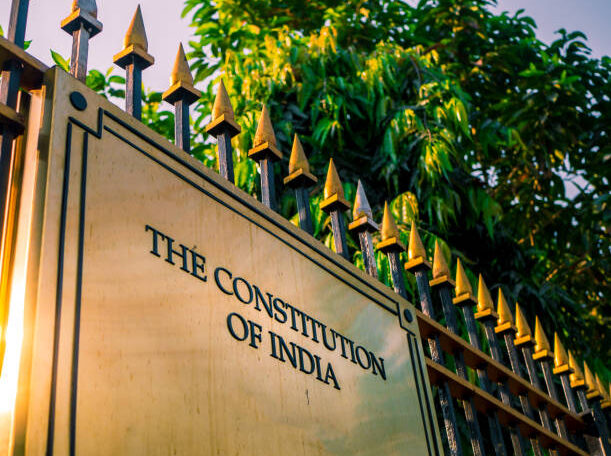Introduction
The Indian Constitution, adopted on 26th January 1950, is the supreme legal document that governs the world’s largest democracy. Among its most crucial features are the Fundamental Rights, enshrined in Part III (Articles 12–35). These rights act as a safeguard against state arbitrariness and ensure the dignity, liberty, and equality of every citizen.
For law students, UPSC aspirants, and general citizens, understanding these rights is essential, not just for academic purposes but also to protect oneself from injustice. This article provides a detailed legal perspective on Fundamental Rights, their significance, key case laws, and frequently asked questions.
What are Fundamental Rights?
Fundamental Rights are basic human liberties guaranteed by the Indian Constitution. Inspired by the US Bill of Rights, they ensure:
- Protection against state oppression
- Equality before the law
- Freedom of speech, religion, and movement
- Access to constitutional remedies
These rights are justiciable, meaning citizens can approach the Supreme Court (Article 32) or High Courts (Article 226) if these rights are violated.
List and Explanation of the Six Fundamental Rights
1. Right to Equality (Articles 14–18)
- Article 14: Equality before law & equal protection of laws (no discrimination by the state).
- Article 15: Prohibits discrimination based on religion, race, caste, sex, or place of birth.
- Article 16: Ensures equality of opportunity in public employment.
- Article 17: Abolishes untouchability.
- Article 18: Abolishes titles (except military & academic).
Key Case Law: E.P. Royappa v. State of Tamil Nadu (1974) – Expanded Article 14 to include arbitrariness as a violation of equality.
2. Right to Freedom (Articles 19–22)
- Article 19(1): Guarantees six freedoms:
- Speech & expression
- Peaceful assembly
- Forming associations
- Free movement across India
- Residence & settlement
- Profession, trade, or business
- Reasonable restrictions apply (e.g., public order, morality, sovereignty).
- Article 20: Protection against self-incrimination & double jeopardy.
- Article 21: Right to life & personal liberty (expanded to include privacy, health, and education).
- Article 22: Protection against arbitrary arrest & detention.
Key Case Law: Maneka Gandhi v. Union of India (1978) – Established that Article 21 includes procedural fairness.
3. Right Against Exploitation (Articles 23–24)
- Article 23: Prohibits human trafficking & forced labour.
- Article 24: Bans child labour (below 14 years).
4. Right to Freedom of Religion (Articles 25–28)
- Article 25: Freedom of conscience & religion.
- Article 26: Right to manage religious affairs.
- Article 27: No tax for religious promotion.
- Article 28: No religious instruction in state-funded schools.
Key Case Law: Shayara Bano v. Union of India (2017) – Declared instant triple talaq unconstitutional.
5. Cultural & Educational Rights (Articles 29–30)
- Article 29: Protects minority languages & cultures.
- Article 30: Right of minorities to establish & administer educational institutions.
6. Right to Constitutional Remedies (Article 32)
- Dr. B.R. Ambedkar called this the “heart and soul” of the Constitution.
- Five Writs:
- Habeas Corpus (illegal detention)
- Mandamus (public duty enforcement)
- Certiorari (quash illegal orders)
- Prohibition (stop lower courts)
- Quo Warranto (challenge illegal appointments)
- Public Interest Litigation (PIL): Allows citizens to seek justice for others.
Why Fundamental Rights Matter Today
- Empower citizens against state misuse of power.
- Ensure democracy by protecting dissent & free speech.
- Promote social justice (e.g., abolition of untouchability).
- Enable legal recourse through courts.
Important Case Laws to Remember
| Case | Significance |
|---|---|
| Kesavananda Bharati v. State of Kerala (1973) | Introduced Basic Structure Doctrine (rights cannot be destroyed by amendments). |
| Maneka Gandhi v. Union of India (1978) | Expanded Article 21 (right to travel abroad included). |
| Naz Foundation v. Govt. of NCT Delhi (2009) | Decriminalized homosexuality under Article 14. |
| Justice K.S. Puttaswamy v. Union of India (2017) | Recognized Right to Privacy as fundamental. |
Conclusion: The Enduring Significance of Fundamental Rights in India
Fundamental Rights are not just legal provisions; they are the cornerstone of India’s democratic framework, ensuring that every citizen lives with dignity, freedom, and equality. These rights, enshrined in Part III of the Constitution, act as a shield against state oppression and a sword to fight injustice. For law students, judiciary aspirants, and the general public, understanding these rights is not merely academic—it is a tool for empowerment.
Why Fundamental Rights Remain Relevant Today
- Protection Against Arbitrary State Action
- Fundamental Rights ensure that the government cannot act in an unreasonable or discriminatory manner. Cases like Maneka Gandhi v. Union of India have expanded their scope, proving that these rights evolve with society.
- Preservation of Democracy
- Rights like freedom of speech (Article 19) and equality (Article 14) uphold democratic values by allowing citizens to criticize policies, protest injustice, and demand accountability.
- Social Justice & Inclusivity
- Provisions like abolition of untouchability (Article 17) and prohibition of child labour (Article 24) reflect India’s commitment to ending exploitation and promoting social equity.
- Judicial Activism & Progressive Interpretation
- The judiciary has played a pivotal role in expanding Fundamental Rights through landmark judgments:
- Kesavananda Bharati (1973) – Introduced the Basic Structure Doctrine, ensuring no amendment can destroy these rights.
- Justice K.S. Puttaswamy (2017) – Recognised privacy as a fundamental right, impacting digital freedoms.
- Navtej Singh Johar (2018) – Decriminalized homosexuality, reinforcing equality under Article 14.
- The judiciary has played a pivotal role in expanding Fundamental Rights through landmark judgments:
- A Tool for Citizen Empowerment
- The Right to Constitutional Remedies (Article 32) allows citizens to directly approach the Supreme Court if their rights are violated. Public Interest Litigation (PIL) has further democratized justice, enabling even the marginalised to seek legal redress.
The Road Ahead: Challenges & Responsibilities
While Fundamental Rights provide strong protections, awareness and vigilance are crucial. Many citizens, especially in rural areas, remain unaware of their rights, making them vulnerable to exploitation. Legal education and grassroots activism are essential to bridge this gap.
Moreover, balancing rights with reasonable restrictions remains a challenge. Issues like free speech vs. hate speech or privacy vs. national security require constant judicial scrutiny to ensure rights are not misused.
Final Thoughts
Fundamental Rights are not static—they grow with society. As India progresses, new interpretations (like digital privacy and LGBTQ+ rights) continue to shape their meaning. For law students and UPSC aspirants, mastering these rights is key to legal expertise. For ordinary citizens, knowing them is self-defence against injustice.
Let us remember the words of Dr. B.R. Ambedkar:
“Fundamental Rights are the means to achieve constitutional morality—where justice, liberty, and equality prevail.”
Stay informed, exercise your rights, and contribute to a fairer, more just India.
Frequently Asked Questions (FAQ)
1. What is the difference between Fundamental Rights and Directive Principles?
- Fundamental Rights are enforceable by courts, while Directive Principles (Part IV) are guidelines for the government.
2. Can Fundamental Rights be suspended?
- Yes, during a National Emergency (Article 359), except Articles 20 & 21.
3. Are Fundamental Rights absolute?
- No, they have reasonable restrictions (e.g., public order, security).
4. Which Article is known as the “Heart and Soul” of the Constitution?
- Article 32 (Right to Constitutional Remedies).


